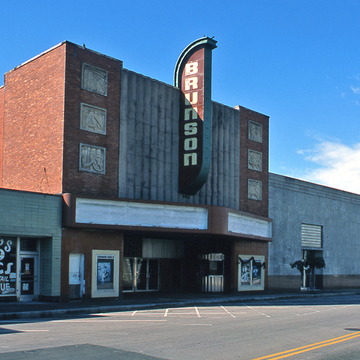Ross S. Sterling, who went from operating a chain of small-town feed stores to become the first president of the Humble Oil and Refining Company, developed Goose Creek in 1917. The Brunson Theater, designed by Beaumont architect Leon Kyburz, sits in the heart of downtown Goose Creek, which became the center of the consolidated Baytown after 1949. End panels of brick frame a central expanse of giant-scaled limestone fluting, bisected by the theater's vertically aligned illuminated sign. The brick panels were fitted with limestone relief plaques by decorative artist Rudolph Wagner. These pay allegorical tribute to the sources of Baytown's wealth. The facade is all that remains of the theater, whose decrepit condition accurately represents the dereliction of downtown Baytown.
Two buildings from the preceding Goose Creek era are the limestone-faced former Citizens National Bank and Trust Company (1941) by Alfred C. Finn at 319 W. Texas Avenue adjoining the Brunson and, at 400 W. Texas, the International Order of Odd Fellows Building (1929) by Houston architect Lenard Gabert, an Art Deco building that has suffered unsympathetic alterations.










